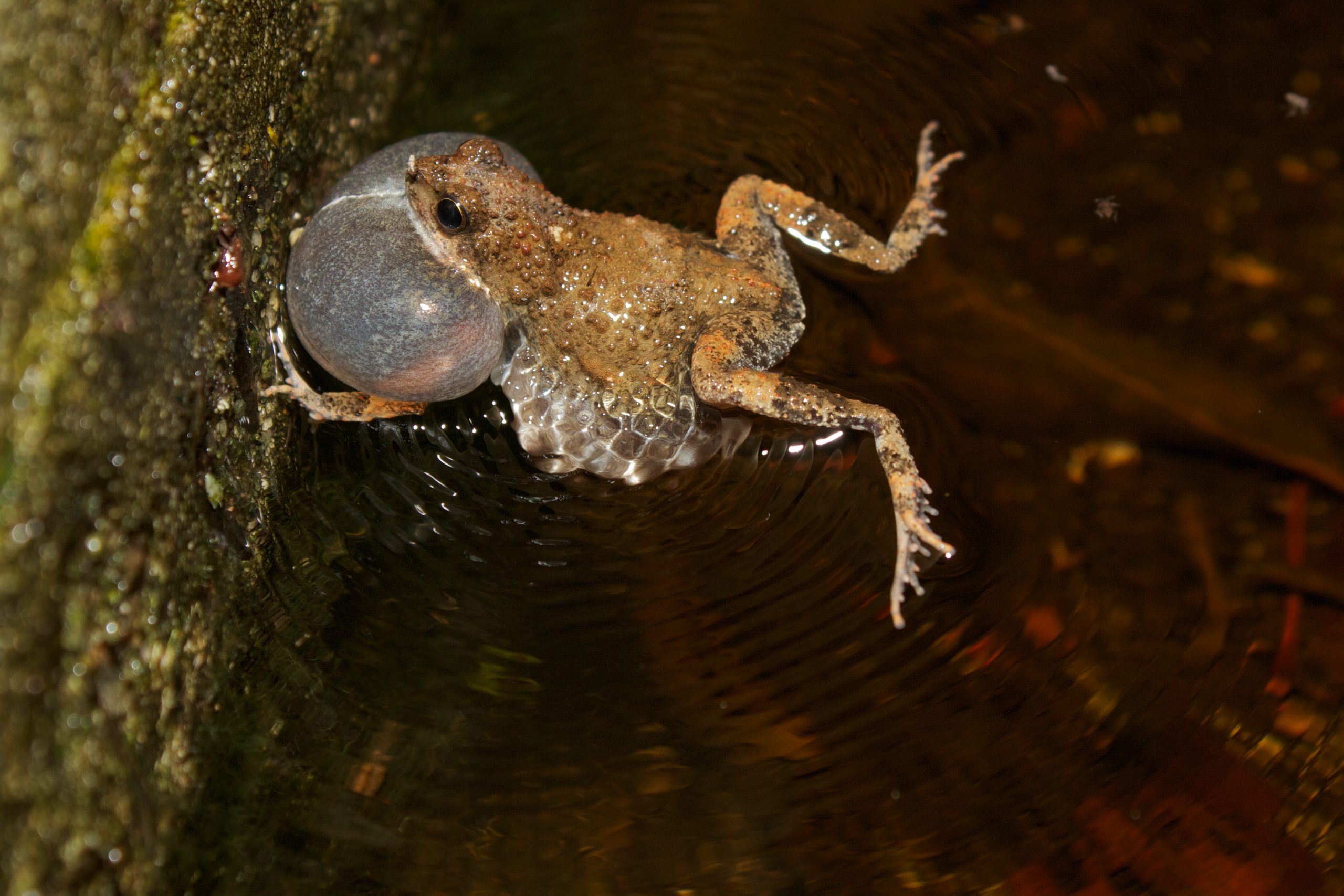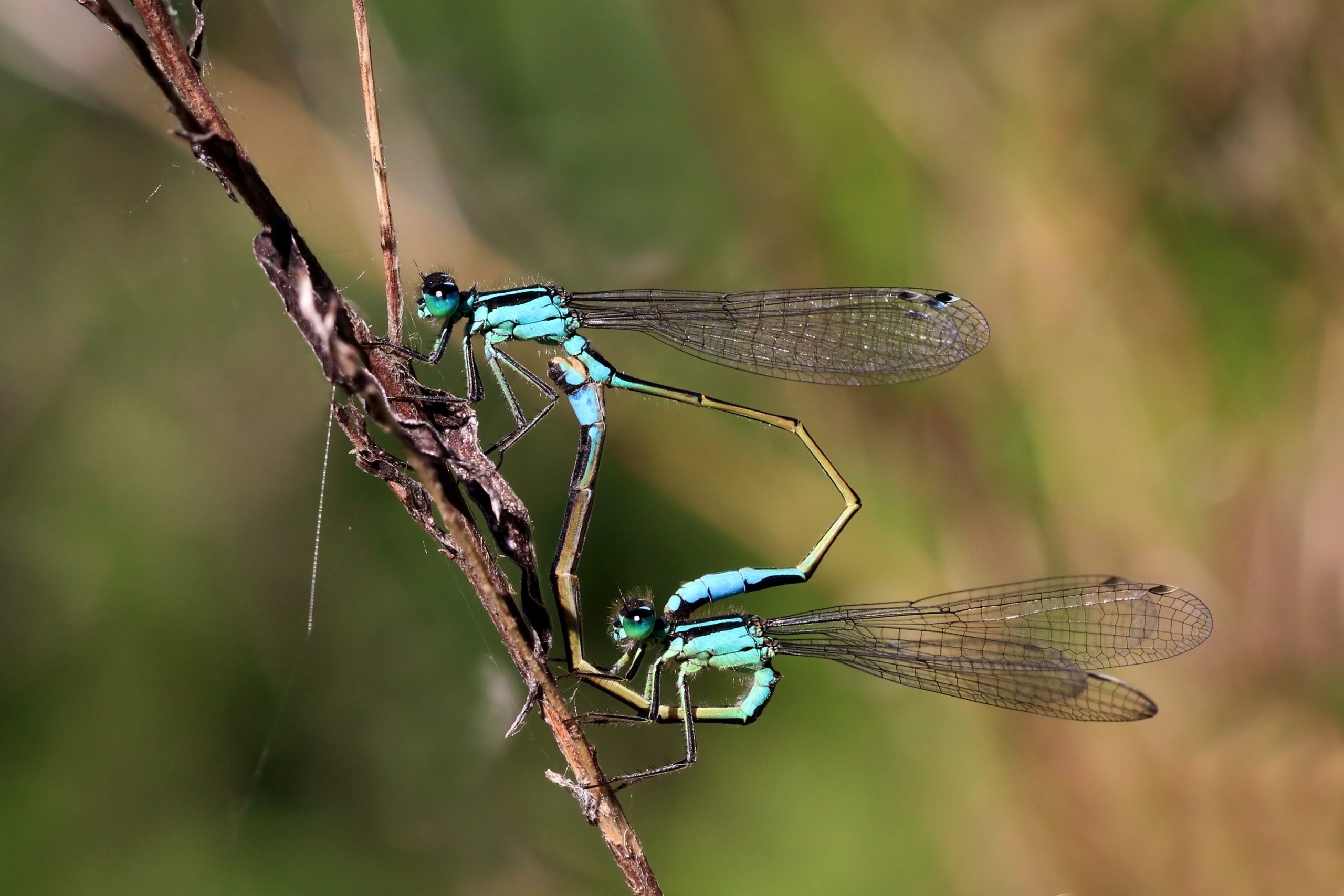9.6 Unconventional ways of finding a mate
In many species, males signal to attract females. Signaling to attract mates does not come without costs. For one, signaling can be energetically demanding. Think about how tired you might be after singing to a potentially unreceptive audience for an entire day. Now think about doing that every day for your entire life! Perhaps more importantly, signaling doesn’t just attract attention from potential mates, it can also attract unwanted attention from predators and parasites. Remember how the peacock’s tail attracted attention from predators like a tiger? This is a common problem in nature. For example, male Túngara frogs from the tropical rain forest sing to attract females. However, this singing also attracts an acoustically savvy bat.

To balance the relative costs and benefits associated with signaling, individuals within a population will sometimes adopt alternative strategies for finding and attracting mates. These alternative mating strategies allow individuals to gain access to mates, sometimes in very sneaky ways, without expending a lot of energy and typically without increasing the risks of predation associated with signaling. Alternative mating strategies can take a number of forms. One such alternative strategy involves “sneaker males” that will steal mating opportunities from other males. For example, in some fishes, males will sneak into the territories of other males and attempt to mate with the females that a rival male is monopolizing. Variations on this behavior, referred to as satellite behavior, can be found in several species of fishes, frogs, and crickets. Alternative mating strategies can be employed by the choosy sex as well. For example, in some damselflies, males will harass and try to force copulations with females. As such, some populations have evolved sexual mimicry in which one sex mimics the other sex in its behavior, morphology, or chemical signaling. In damselflies, females have evolved to mimic males in their appearance, allowing females to avoid harassment and continue to mate only with males that they actively choose.

Examples of sexual mimicry include the spotted hyena, certain types of fishes, birds, some species of insects, and even plants. In plants, especially orchids, flowers can mimic the mating signals of their pollinator insects to attract them. These insects are attracted and pollinate the flowers through pseudo-copulations or other sexual behaviors performed on the flower.

Sexual mimicry can influence the social system of a species as well. The most common example is the spotted hyena in which female hyenas resemble male hyenas in their sexual anatomy. Females have an elongated clitoris that resembles a penis, and a false scrotal sac. These pseudo-penises, paired with high levels of certain hormones, result in highly aggressive and dominant females. Not only is there a dominance hierarchy (a ranking system based on aggression) among female spotted hyenas, but this dominance hierarchy extends to males as well. Females with the lowest social ranks are still more dominant than the highest-ranking males—an unusual social system among animals.

- Schlüter, Philipp & Schiestl, Florian. (2008). Molecular mechanisms of floral mimicry in orchids. Trends in plant science. 13. 228-35. 10.1016/j.tplants.2008.02.008. https://www.researchgate.net/publication/5428899_Molecular_mechanisms_of_floral_mimicry_in_orchids ↵
- Spotted hyena females have a pseudopenis that strongly resembles the penis of males. Bettina Wachter/Leibniz Institute for Zoo and Wildlife Research in Berlin. https://www.vox.com/2018/6/18/17469196/metoo-spotted-hyena-pseudopenis-matriarchy ↵

